Are you ready to take your online store to the next level? One crucial aspect that can make or break your sales is understanding how to calculate shipping costs. Whether you’re just starting out or looking to refine your existing process, shipping can often feel like a puzzle—full of hidden fees, fluctuating rates, and complicated rules. But fear not! In this full guide, we’re diving into the nitty-gritty of shipping costs, breaking it down into simple steps that anyone can follow. By the end, you’ll not only have a clearer grasp of how to determine shipping costs for your products, but you’ll also discover how an effective shipping strategy can enhance customer satisfaction, boost sales, and ultimately drive your business forward. So, let’s roll up our sleeves and get started on your journey to mastering shipping costs!
Understanding Shipping Costs and Their Importance for Your Online Store
Shipping costs play a crucial role in the overall success of your online store. They not only affect your profit margins but also influence customer satisfaction and purchasing decisions. If your shipping fees are too high, potential customers might abandon their carts, while excessively low fees can eat into your profits. Understanding how to calculate these costs accurately is essential for maintaining a competitive edge.
When determining shipping costs, several factors come into play. Here are some key elements to consider:
- Weight and Dimensions: Heavier and bulkier items typically incur higher shipping costs. Make sure to weigh and measure your products accurately.
- Shipping Method: Different carriers offer various pricing tiers based on speed and service level. Options may include standard, expedited, or overnight shipping.
- Destination: Shipping costs can vary significantly depending on the distance and location of the customer. Consider whether you’ll offer flat-rate shipping for certain regions.
- Insurance and Tracking: If you offer insurance or tracking to customers, these services will add to your shipping costs.
- Packaging Materials: Don’t forget to account for the cost of boxes, tape, and other packaging supplies needed to ensure your products arrive safely.
To accurately calculate shipping costs, you can utilize various tools and resources. Many eCommerce platforms provide built-in calculators that can estimate shipping fees based on the data you input. Alternatively, you can create a simple formula to estimate costs:
| Factor | Calculation Method |
|---|---|
| Base Rate | Flat rate set by carrier |
| Weight Charge | Weight x Rate per pound |
| Distance Charge | Distance (miles) x Rate per mile |
| Additional Services | Add costs for insurance or tracking |
| Total Shipping Cost | Base Rate + Weight Charge + Distance Charge + Additional Services |
It’s also beneficial to conduct market research to see how your competitors are handling shipping fees. Are they offering free shipping over a certain amount? Do they have any promotions that make shipping more appealing? Understanding these strategies can help you adjust your own pricing and shipping policies accordingly.
Moreover, transparency in shipping costs can build trust with your customers. Displaying shipping fees upfront during the checkout process can prevent unpleasant surprises and cart abandonment. Additionally, consider offering a shipping calculator on your site, allowing customers to estimate their shipping costs based on their location and order size.
Lastly, don’t overlook the importance of regularly reviewing your shipping strategy. As your business grows and your product offerings expand, your shipping needs may change. Stay adaptable and continuously seek ways to optimize your shipping process to improve customer satisfaction and enhance your bottom line.
Identifying Key Factors That Influence Shipping Rates
When it comes to calculating shipping costs for your online store, several key factors play a significant role in determining the final rates. Understanding these elements can not only help you set competitive prices but also improve your customers’ experience. Let’s dive into what influences these costs.
1. Distance
The distance between your warehouse or fulfillment center and the customer’s location is one of the most straightforward factors affecting shipping rates. Generally, the further the package has to travel, the higher the shipping cost will be. Here’s a quick look at how distance impacts shipping:
| Distance Range | Estimated Shipping Cost |
|---|---|
| Local (0-50 miles) | $5 – $10 |
| Regional (50-300 miles) | $10 – $20 |
| National (300 miles+) | $20 - $50 |
2. Package Weight and Dimensions
Your package’s weight and size significantly influence shipping rates. Carriers often use a formula that factors in both weight and dimensional weight, which is calculated based on the package’s size. Therefore, even lightweight items in large boxes can incur higher charges. Consider these points:
- Heavier packages generally attract higher fees.
- Larger packages can incur dimensional weight pricing.
- Optimizing your packaging can reduce costs.
3. Shipping Method
The shipping method chosen—standard, expedited, next-day, etc.—is another vital factor. Faster shipping methods naturally come with a premium price tag. Here’s a brief comparison to illustrate the cost differences:
| Shipping Method | Typical Cost | Delivery Timeframe |
|---|---|---|
| Standard | $5 - $15 | 3-7 days |
| Expedited | $15 – $30 | 2-3 days |
| Next-Day | $30 - $70 | 1 day |
4. Carrier Choice
The carrier you choose can make a big difference in shipping rates. Different carriers have varying pricing structures and service levels. It’s essential to compare not only their prices but also their reliability and delivery speed. Some popular carriers include:
- USPS
- FedEx
- UPS
- DHL
5. Shipping Zones
Shipping zones refer to the geographical regions that carriers use to determine shipping costs. Each zone corresponds to a distance from your shipping point, impacting rates significantly. Be familiar with how your packages fit into these zones to strategize your shipping effectively.
By keeping these factors in mind, you can better understand how to calculate and manage shipping costs for your online store, ensuring that you offer reasonable rates while maintaining your profit margins.
How to Choose the Right Shipping Carrier for Your Needs
Choosing the right shipping carrier is crucial for the success of your online store. Every business has unique needs, and finding a carrier that aligns with your requirements can help enhance customer satisfaction and optimize costs. Here are some factors to consider:
- Delivery Speed: Assess how quickly you need your products to reach your customers. If you offer express shipping, a carrier with faster delivery options is essential.
- Cost: Compare shipping rates across various carriers. A carrier that appears cheaper might have hidden fees, such as fuel surcharges or residential delivery fees.
- Service Area: Ensure the carrier you choose covers the geographic areas where your customers are located. Some carriers may excel in certain regions but struggle in others.
- Tracking Capabilities: Customers appreciate transparency. Look for carriers that provide robust tracking options that allow your customers to see their shipment status in real time.
- Customer Support: Evaluate the level of customer support the carrier offers. Responsive customer service can help resolve issues quickly and maintain a positive customer experience.
Another important aspect to consider is the type of products you’re shipping. Fragile items may require carriers that specialize in careful handling, while bulk items might be more suited for freight carriers. It’s beneficial to assess your product characteristics and match them with the carrier’s strengths.
Don’t forget to explore options for international shipping if you plan to reach a global audience. Some carriers have partnerships that can provide better rates and services for international shipments.
| Carrier | Delivery Speed | Cost Estimation |
|---|---|---|
| Carrier A | 1-3 Days | $$$ |
| Carrier B | 2-5 Days | $$ |
| Carrier C | 3-7 Days | $ |
Lastly, consider the integration capabilities of the carrier with your online store platform. An integrated shipping solution can streamline your order processing, saving time and reducing errors in shipping. Look for carriers that offer API access or plugins that easily connect with your e-commerce platform.
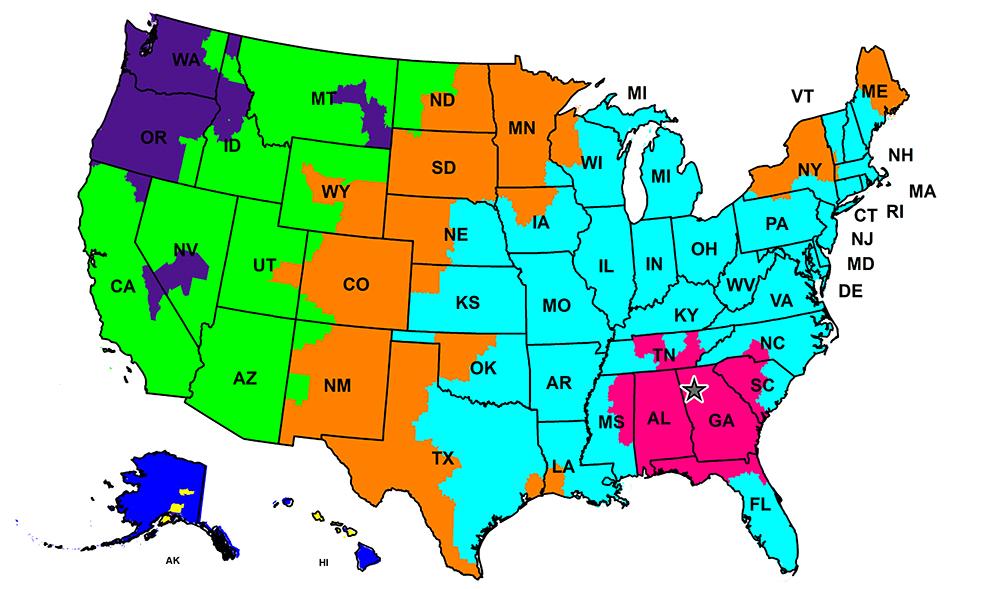
Decoding Shipping Zones and Their Impact on Pricing
Understanding shipping zones is crucial for any online retailer aiming to calculate accurate shipping costs. Shipping zones are geographical areas defined by shipping carriers that determine the rates and services available for delivery to different locations. By recognizing these zones, you can tailor your shipping strategies to enhance customer satisfaction while keeping costs manageable.
Each shipping carrier, such as FedEx, UPS, or USPS, has its own set of shipping zones. Typically, these zones are based on the distance between the shipping origin (your business location) and the destination. The farther the destination, the higher the shipping cost. Here’s a quick overview of how shipping zones are usually categorized:
- Zone 1: Local – within the same city or region.
- Zone 2: Nearby – a few states away.
- Zone 3: National – across the country.
- Zone 4: International – outside the country.
Your choice of carrier can significantly influence your pricing strategy. Some carriers offer flat rate shipping to specific zones, which can simplify cost calculations. For example, if you’re shipping primarily within Zone 1, utilizing flat rate services may provide you with a competitive edge, as you can offer predictable shipping costs to your customers. On the other hand, if your business caters to a broader audience, you must consider tiered pricing based on different zones.
When determining shipping costs, it’s essential to account for both the shipping zone and the weight of your products. Carriers typically use a combination of these factors to provide rate estimates. For instance, a lightweight item shipped to a distant zone may have a different cost compared to a heavier item shipped locally. To illustrate this, here’s a simple table comparing estimated shipping costs based on weight and zone:
| Weight (lbs) | Zone 1 | Zone 2 | Zone 3 |
|---|---|---|---|
| 1 | $5 | $7 | $10 |
| 5 | $8 | $10 | $15 |
| 10 | $12 | $15 | $20 |
Another critical aspect to consider is the potential for charging customers a flat rate or offering free shipping. While this can entice shoppers, it’s essential to incorporate your shipping zone calculations to ensure that costs don’t eat into your profits. For example, if you frequently ship to distant zones, offering free shipping might not be feasible without adjusting product prices accordingly.
Ultimately, understanding shipping zones empowers you to create a more effective pricing strategy. By analyzing your customer locations and shipping practices, you can make informed decisions about whether to implement flat rates, zone-based pricing, or even free shipping thresholds. This not only helps you cover costs but also enhances customer satisfaction and loyalty.
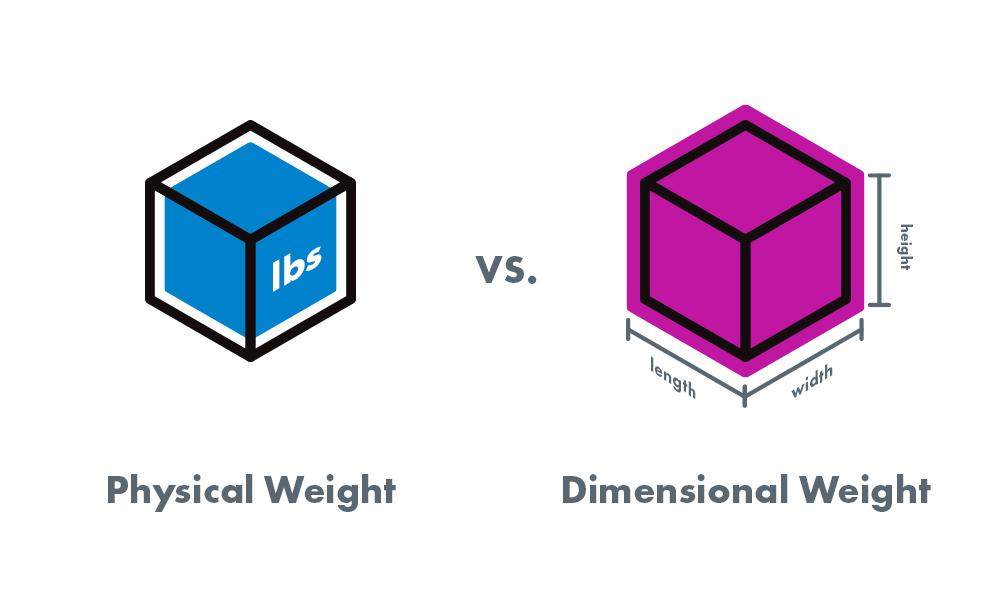
Calculating Dimensional Weight: What You Need to Know
When it comes to shipping costs, understanding dimensional weight is crucial for any online store owner. This calculation method helps shipping companies determine the price of shipping based not just on weight, but also on the volume of the package. If your package is large but lightweight, you could face higher shipping fees due to dimensional weight.
To calculate dimensional weight, you need to follow a simple formula. Typically, the formula is:
Dimensional Weight = (Length x Width x Height) / Dimensional Factor
Where the dimensional factor can vary by carrier. For example, many carriers use a dimensional factor of 166 for domestic shipments in the US. However, it’s essential to check with your specific carrier for their exact dimensional factor.
Here’s a breakdown of how to use the formula:
- Measure Your Package: Use a tape measure to get the length, width, and height of your package in inches.
- Multiply the Dimensions: Multiply the three measurements together to get the total cubic inches.
- Divide by the Dimensional Factor: Take the cubic inch total and divide it by the dimensional factor (e.g., 166).
Let’s look at a quick example. Suppose you have a package that is 24 inches long, 12 inches wide, and 10 inches high. The calculation would look like this:
| Dimension | Value (inches) |
|---|---|
| Length | 24 |
| Width | 12 |
| Height | 10 |
| Total Cubic Inches | 2880 |
Now, divide 2880 by 166, and you get a dimensional weight of approximately 17.35 pounds. If your actual weight is lower than this, the shipping cost will be based on the dimensional weight.
Many e-commerce platforms and shipping calculators can automatically compute this for you, which makes it easier to set accurate shipping fees. However, having a solid understanding of how dimensional weight is calculated can help you make informed decisions about packaging and shipping options. This knowledge could even lead you to explore alternative shipping methods or packaging materials that may reduce costs.
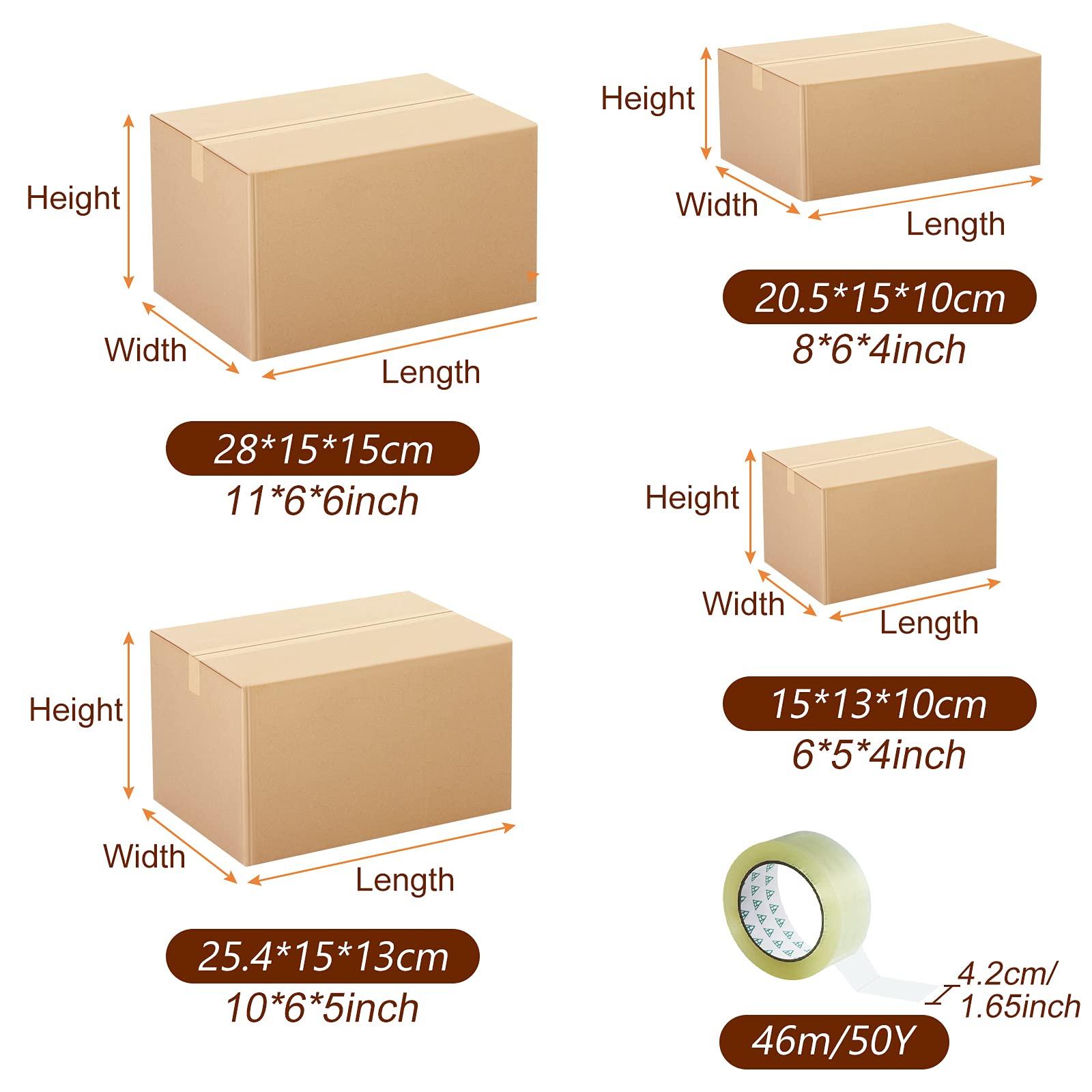
The Role of Package Size and Weight in Shipping Costs
When it comes to shipping costs, two of the most significant factors are the package size and weight. Understanding how these elements interact can save your business money and improve customer satisfaction. Here’s what you need to know.
Shipping carriers typically use a pricing model based on both dimensional weight and actual weight. Dimensional weight is calculated by measuring the length, width, and height of a package, then applying a predetermined divisor. If the dimensional weight exceeds the actual weight, carriers will charge based on the dimensional weight instead.
| Measurement Type | Calculation Example | Outcome |
|---|---|---|
| Actual Weight | 5 lbs | Charge based on 5 lbs |
| Dimensional Weight | 20″ x 15″ x 10″ = 3000 cubic inches ÷ 166 = 18 lbs | Charge based on 18 lbs |
As you can see, a larger package can potentially incur higher shipping costs, even if it doesn’t weigh much. This is why it’s crucial to optimize the size of your packages. Here are some tips to consider:
- Choose the right box: Use the smallest box possible for your products to avoid unnecessary dimensional weight charges.
- Use packing materials wisely: Fill voids in the box with lightweight materials to prevent damage without adding excessive weight.
- Consider flat-rate shipping options: If your products are particularly heavy or large, flat-rate shipping may be more economical.
Another aspect to consider is how shipping costs affect your pricing strategy. If your shipping charges are high due to the weight and size of your packages, it might deter customers from completing their purchases. One way to mitigate this is to build shipping costs into the product price or offer free shipping on orders over a certain amount.
In addition, consider utilizing shipping calculators available through various online platforms. These tools can help you estimate costs based on package size and weight, ensuring you provide accurate quotes to your customers. This transparency builds trust and can lead to higher conversion rates.
Ultimately, being strategic about package size and weight not only impacts your shipping costs but also influences customer experience. By keeping these factors in mind, you can streamline your shipping process and enhance your online store’s profitability.
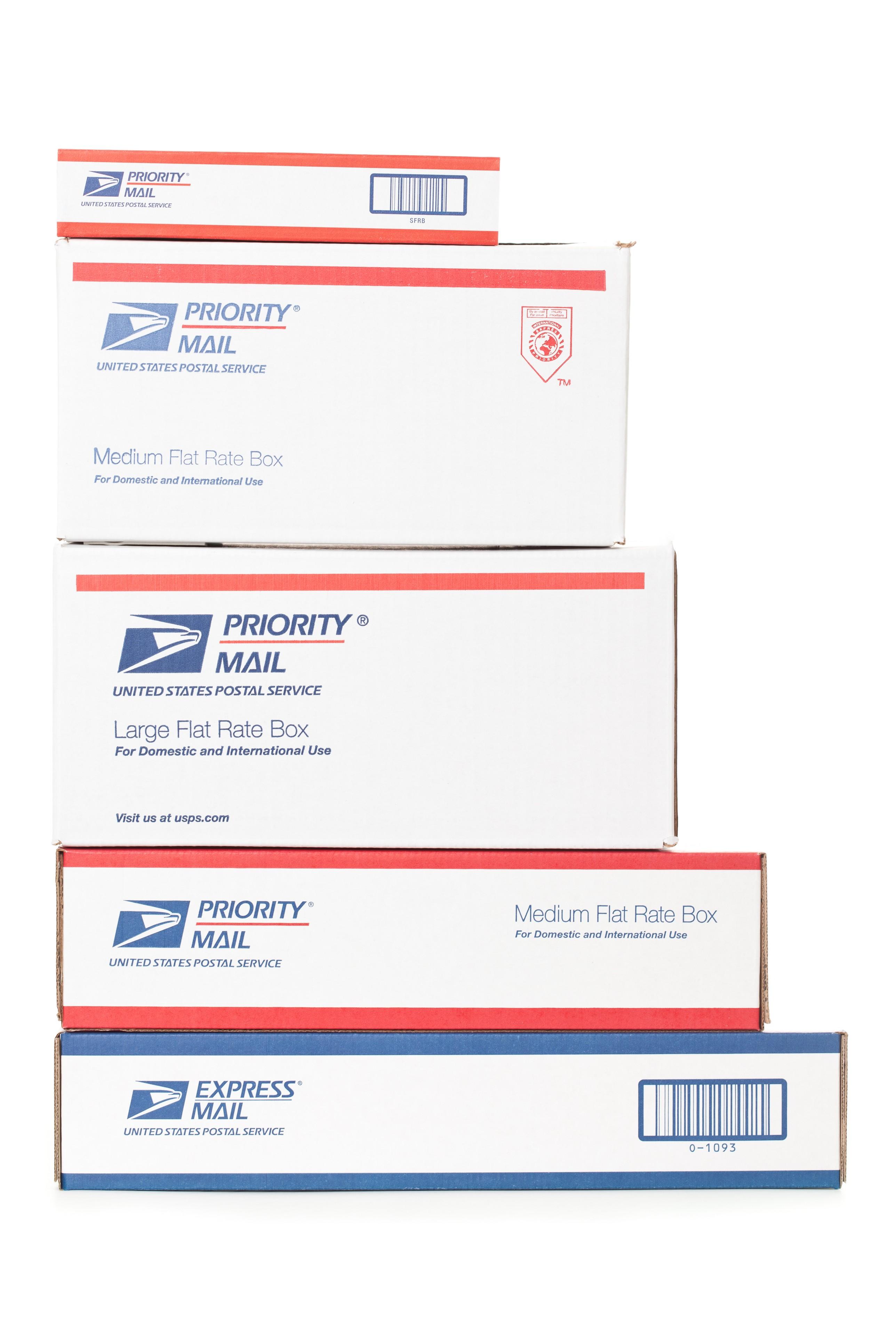
Exploring Flat Rate vs. Variable Rate Shipping Options
When it comes to shipping options for your online store, choosing between flat rate and variable rate shipping can significantly impact your bottom line and customer satisfaction. Let’s dive into both options to help you make an informed decision.
Flat Rate Shipping is an appealing choice for many e-commerce businesses. With this model, you charge a set fee for shipping, regardless of the order size or weight. Here are some of the key benefits:
- Simplicity: Customers appreciate knowing exactly how much shipping will cost upfront. This transparency can lead to higher conversion rates.
- Predictability: Your business can better manage shipping expenses since costs remain constant, regardless of the order details.
- Encourages Larger Orders: Customers might be more inclined to purchase additional items if they know shipping costs won’t increase significantly.
However, flat rate shipping isn’t without its downsides. One potential issue is that it may not always reflect the actual shipping costs, especially for lighter or heavier items. This could either result in lost revenue or alienate customers who feel they are being overcharged. Therefore, it’s crucial to analyze your product range and customer behavior before committing to this model.
In contrast, variable rate shipping calculates shipping fees based on the weight, dimensions, and delivery location of each order. This method may involve more complexity but can be advantageous in several ways:
- Accuracy: Customers pay for exactly what they get, which can enhance their trust in your brand.
- Flexibility: It allows you to adjust shipping rates based on real-time data and shipping carrier rates, ensuring you stay competitive.
- Cost Management: You can optimize shipping costs according to the specific requirements of each order, potentially saving your business money on shipping expenses.
To illustrate the differences, consider the following table showcasing a sample shipping comparison:
| Shipping Type | Order Weight | Shipping Cost |
|---|---|---|
| Flat Rate | Up to 5 lbs | $5.00 |
| Variable Rate | Up to 5 lbs | $3.50 |
| Flat Rate | 10 lbs | $5.00 |
| Variable Rate | 10 lbs | $7.50 |
Ultimately, the choice between flat rate and variable rate shipping hinges on your specific business needs, product types, and customer expectations. By weighing the pros and cons of each option, you can tailor your shipping strategy to enhance customer satisfaction and optimize your operational efficiency.
Consider experimenting with both models to see which resonates more with your audience. You could even incorporate a hybrid approach, offering flat rate shipping for select items while utilizing variable rates for others, combining the benefits of both methods.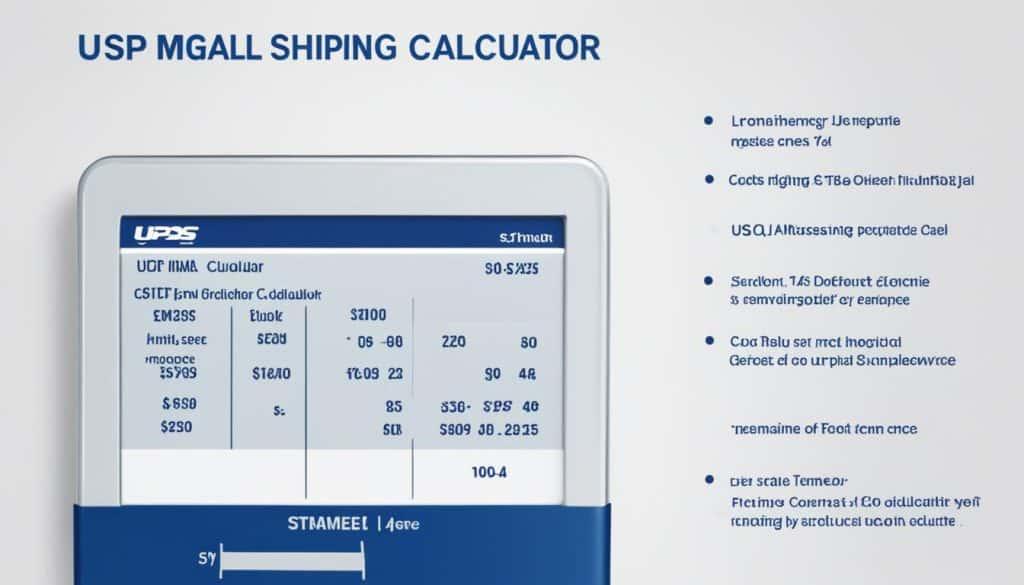
How to Use Shipping Calculators to Your Advantage
When it comes to running a successful online store, understanding shipping costs is crucial. Shipping calculators can be your secret weapon, helping you optimize costs and enhance customer satisfaction. By leveraging these tools, you can streamline your shipping process and turn a potential headache into a smooth operation.
Here’s how you can effectively utilize shipping calculators:
- Determine Accurate Shipping Rates: Use shipping calculators provided by carriers like UPS, FedEx, or USPS to get real-time shipping rates based on package dimensions and weight. This helps you avoid overcharging or undercharging your customers, ensuring you retain their trust.
- Compare Different Carriers: Don’t limit yourself to one shipping provider. Utilize calculators from various carriers to compare costs, delivery times, and services. This allows you to choose the most economical option that meets your customers’ expectations.
- Incorporate Shipping Costs into Your Strategy: Analyze the shipping costs provided by the calculators to adjust your pricing strategy. You can offer free shipping on orders over a certain amount by factoring in shipping costs into your product pricing, which can encourage larger purchases.
- Offer Multiple Shipping Options: Providing customers with a variety of shipping options can significantly enhance their shopping experience. Use calculators to display different shipping methods—like standard, expedited, and overnight—with their respective costs and delivery times.
Consider these tips for maximizing your shipping calculator usage:
- Integrate with Your E-commerce Platform: Many e-commerce platforms support plugins or integrations for shipping calculators. This means customers can see the total cost, including shipping, at checkout, reducing cart abandonment.
- Regularly Update Shipping Settings: Shipping rates can fluctuate due to fuel prices or carrier policy changes. Regularly using shipping calculators ensures you’re always offering current rates, maintaining your competitive edge.
- Analyze Shipping Data: Use the data from shipping calculators to assess which products are more expensive to ship. This insight can guide you in product selection and inventory management for your online store.
Incorporating shipping calculators isn’t just about crunching numbers; it’s about enhancing the entire customer experience. When shoppers see clear and fair shipping options, they’re more likely to complete their purchases and return for future orders.
| Shipping Carrier | Standard Rate | Expedited Rate | Delivery Time |
|---|---|---|---|
| UPS | $5.99 | $15.99 | 3-5 Business Days |
| FedEx | $6.49 | $17.49 | 2-4 Business Days |
| USPS | $4.99 | $12.99 | 3-7 Business Days |
By using shipping calculators wisely, you can not only save on costs but also create a more enjoyable shopping experience for your customers, ultimately driving sales and loyalty for your online store.
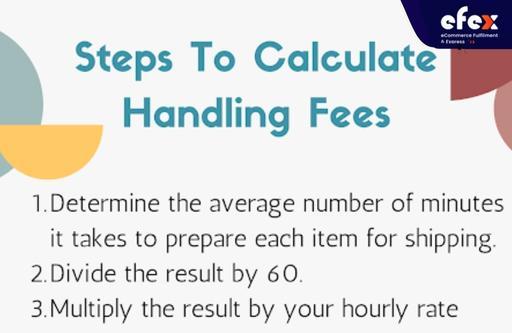
Incorporating Handling Fees: When and How Much
When it comes to online selling, understanding the intricacies of handling fees is crucial for maintaining profitability while ensuring customer satisfaction. Incorporating handling fees effectively involves strategic timing and clear communication with your customers. Let’s explore the key aspects you need to consider.
First, it’s essential to determine when to apply handling fees. You might consider these scenarios:
- Product Type: Certain items may require special handling or packaging that justifies an additional fee.
- Order Volume: For bulk orders, a handling fee might be necessary to cover the extra work involved in processing and shipping.
- Geographic Considerations: If you’re shipping to remote areas, you might need to incorporate handling fees to cover increased operational costs.
Next, deciding how much to charge for handling fees can be tricky. Here are a few tips to guide your pricing:
- Cost Analysis: Calculate the direct costs associated with handling each order, including packaging materials and labor.
- Market Research: Investigate what your competitors are charging for similar fees. This will help you remain competitive while still covering your costs.
- Transparency: Ensure your customers understand what these fees cover. This can help mitigate any negative reactions to added costs.
To provide a clearer picture of how handling fees might look in practice, consider the following table:
| Item Type | Base Shipping Cost | Handling Fee | Total Cost |
|---|---|---|---|
| Standard Item | $5.00 | $1.00 | $6.00 |
| Fragile Item | $5.00 | $3.00 | $8.00 |
| Bulk Order | $15.00 | $5.00 | $20.00 |
It’s also important to consider the customer experience when introducing handling fees. Here are some strategies to keep in mind:
- Clear Communication: Make sure to display handling fees transparently during the checkout process.
- Incentives: Offering free shipping on orders over a certain amount can help absorb handling fees without alienating customers.
- Customer Feedback: Regularly solicit feedback about your shipping costs to understand how customers perceive the handling fees.
Ultimately, incorporating handling fees should be a balanced equation of cost, communication, and customer understanding. By effectively managing these fees, you can enhance your shipping strategy while safeguarding your bottom line.

Setting Up a Transparent Shipping Policy for Your Customers
Crafting Your Transparent Shipping Policy
In today’s competitive online marketplace, a clear and transparent shipping policy can set you apart from the rest. Customers appreciate knowing exactly what to expect when it comes to shipping costs and delivery times. A well-defined policy not only builds trust but also enhances the overall shopping experience.
To establish a transparent shipping policy, begin by outlining your shipping options. Consider including the following:
- Standard Shipping: Define how long it typically takes and any associated costs.
- Express Shipping: Highlight faster delivery options and the premium charges that come with them.
- International Shipping: Mention available countries and any additional fees or customs duties that might apply.
Next, provide clarity on your shipping rates. Customers want to understand how shipping fees are calculated. You might want to present a simple shipping rates table to showcase costs based on different factors like weight or destination:
| Weight (lbs) | Domestic Shipping Cost | International Shipping Cost |
|---|---|---|
| 0-1 | $5.00 | $15.00 |
| 1-5 | $10.00 | $25.00 |
| 5-10 | $15.00 | $35.00 |
Another critical aspect is to communicate your return policy regarding shipping. Clearly state whether customers will be responsible for return shipping costs and under what circumstances. This transparency helps to avoid confusion and promotes customer satisfaction.
Don’t forget to include any additional information that can affect shipping times, such as:
- Processing Times: Indicate how long it takes to process an order before it ships.
- Holidays and Peak Seasons: Notify customers about potential delays during busy times.
ensure your shipping policy is easily accessible. Place links to your shipping information prominently on your website, such as in the footer or during the checkout process. This not only aids in transparency but also reduces cart abandonment rates by addressing customer concerns proactively.
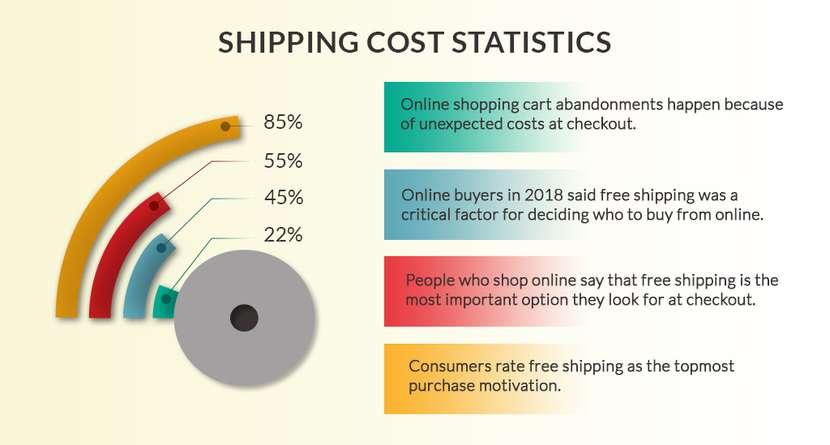
Offering Free Shipping: Strategies That Work
Strategies for Offering Free Shipping
When it comes to increasing sales and enhancing customer satisfaction, offering free shipping can be a game changer. However, implementing it successfully requires strategic planning. Here are some effective strategies to consider:
- Set a Minimum Purchase Threshold: Encourage customers to spend more by offering free shipping on orders over a certain amount. This not only increases your average order value but makes customers feel like they’re getting a deal.
- Limit Free Shipping to Specific Items: If certain products have higher margins, consider offering free shipping exclusively on those items to help offset costs.
- Use Time-Limited Promotions: Create urgency by offering free shipping for a limited time. This can drive quick sales and make customers act fast.
- Incorporate Membership Programs: Consider establishing a membership or loyalty program that provides ongoing free shipping for members, fostering customer retention.
Additionally, you can explore options like partnering with logistics providers or utilizing flat-rate shipping models that can help balance costs while still offering free shipping benefits.
Another effective approach is to communicate the value of free shipping clearly on your website. Make sure your customers know that they can save on shipping costs, and highlight this in your marketing campaigns. Consider placing a banner on your homepage or including it in your email newsletters.
| Strategy | Benefits |
|---|---|
| Minimum Purchase Threshold | Increases average order value |
| Specific Items Only | Focuses on higher-margin products |
| Time-Limited Promotions | Creates urgency and boosts sales |
| Membership Programs | Builds customer loyalty |
be transparent about any conditions for free shipping. Customers appreciate clarity and are more likely to complete a purchase if they understand the terms. Post these details prominently on your site to avoid confusion.
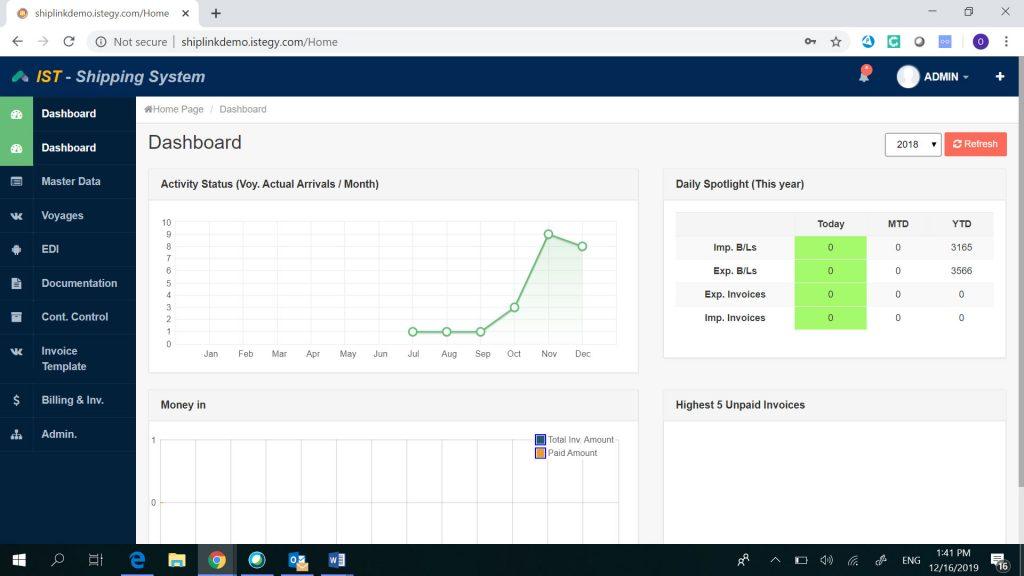
Using Shipping Software to Streamline Your Process
In today’s fast-paced e-commerce environment, leveraging shipping software can significantly enhance your operational efficiency. By automating various aspects of the shipping process, you can focus more on growing your business while reducing the potential for errors and delays.
One of the primary advantages of using shipping software is the ability to calculate shipping costs accurately. This tool allows you to:
- Integrate multiple carriers: Access real-time rates from major carriers, ensuring you offer competitive pricing.
- Customize shipping options: Provide various delivery choices to your customers, such as standard, expedited, or same-day shipping.
- Optimize packaging: Automatically determine the best box size for each order, which can help save on shipping costs.
Many shipping software solutions also come equipped with intuitive dashboards that display key metrics. This feature enables you to:
- Track shipments: Monitor the status of packages in transit and keep customers informed.
- Analyze shipping data: Gain insights into shipping trends and costs over time, allowing for better budgeting and decision-making.
- Manage returns: Streamline the return process with pre-generated labels, making it easier for customers to send items back.
Integrating shipping software with your e-commerce platform can create a seamless experience from checkout to delivery. Consider the following benefits:
| Benefit | Description |
|---|---|
| Time Savings | Automate tasks such as label printing and tracking notifications. |
| Cost Efficiency | Negotiate better rates based on shipping volume. |
| Improved Accuracy | Reduce human error in shipping calculations and label creation. |
When selecting shipping software, look for features that suit your business needs. Whether you’re a small startup or an established enterprise, the right software can scale with your growth. Make sure to consider:
- User-Friendly Interface: A simple layout can save you and your team time when processing orders.
- Customer Support: Choose a provider that offers reliable assistance when you need help.
- Integration Capabilities: Ensure compatibility with your existing e-commerce platforms and tools.
With the right shipping software in place, you can transform your shipping process into a competitive advantage. Not only will this improve your customer satisfaction rates, but it will also enhance your overall profitability by minimizing costs and maximizing efficiency.
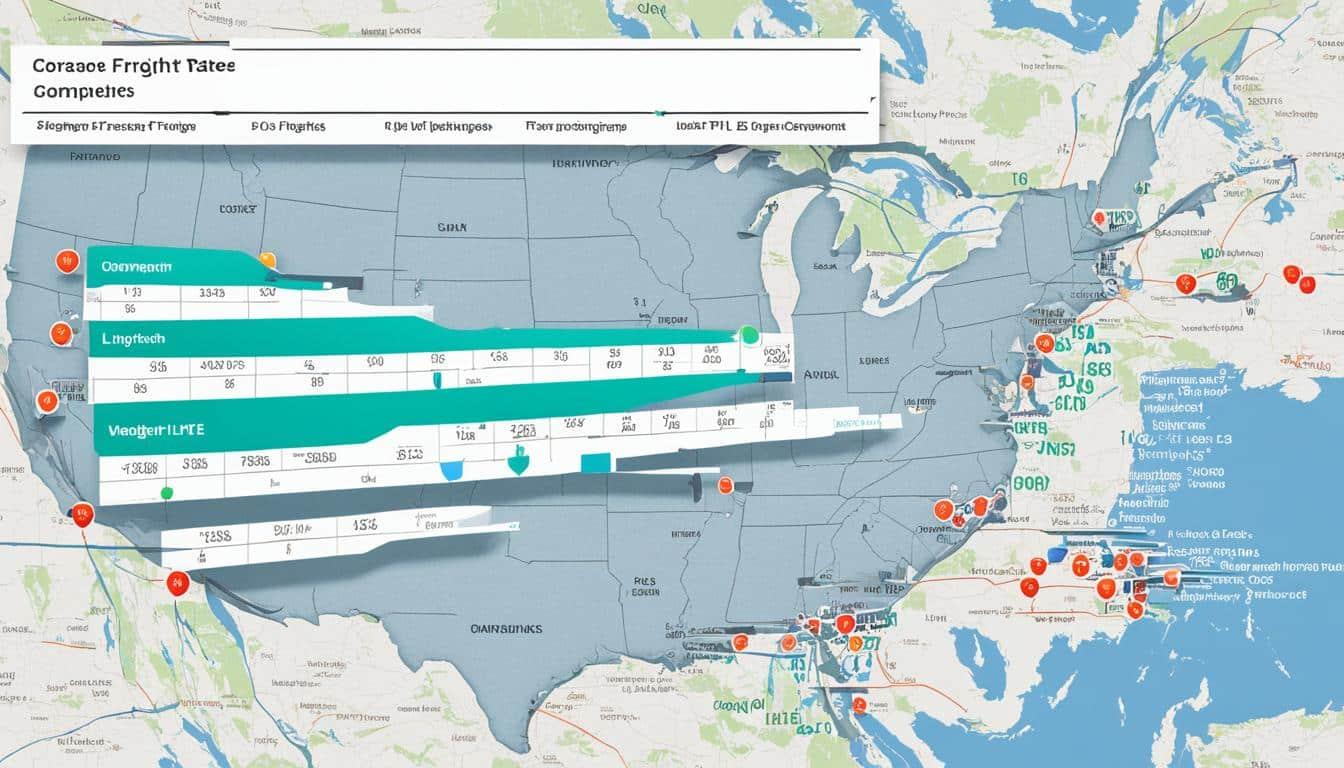
Analyzing Competitor Shipping Rates for Better Positioning
To ensure your online store remains competitive, it’s essential to take a closer look at what your competitors are charging for shipping. By analyzing their shipping rates, you can better position your offerings and attract more customers. Here’s how to effectively assess and leverage competitor shipping rates.
Start with a Research Strategy: Begin by identifying your primary competitors. Look for businesses that sell similar products and target the same audience. Once you’ve listed them, gather data on their shipping rates by:
- Visiting their websites
- Using shipping calculators available on their platforms
- Reviewing customer feedback related to shipping experiences
Compare Pricing Structures: Create a table to visualize the different shipping rates offered by your competitors. Highlight the shipping costs based on various factors, such as:
| Competitor | Standard Shipping | Express Shipping | Free Shipping Threshold |
|---|---|---|---|
| Competitor A | $5.99 | $15.99 | $50 |
| Competitor B | $4.99 | $12.99 | $75 |
| Competitor C | $6.49 | $14.49 | $60 |
This comparison will help you understand where you stand in the market. Are your shipping rates higher or lower than your competitors’? This insight can guide your decisions on whether to adjust your own rates or introduce promotional strategies.
Factor in Service Levels: It’s not just about pricing—consider the service level associated with shipping. Does a competitor offer faster delivery times or superior packaging? Are they transparent about their shipping policies? These details contribute to customer perception and satisfaction.
Utilize the Findings: Once you’ve analyzed competitor rates, use this data to inform your own shipping strategy. You might find opportunities to offer:
- Competitive pricing: Adjust your rates to match or undercut competitors.
- Free shipping offers: Consider implementing minimum purchase amounts for free shipping to encourage larger orders.
- Enhanced service options: Provide faster shipping methods or better tracking capabilities.
By strategically positioning your shipping rates and services, you can attract more customers and potentially increase your sales. Remember, the goal is to create a balance between affordability and quality service that meets your customers’ expectations.
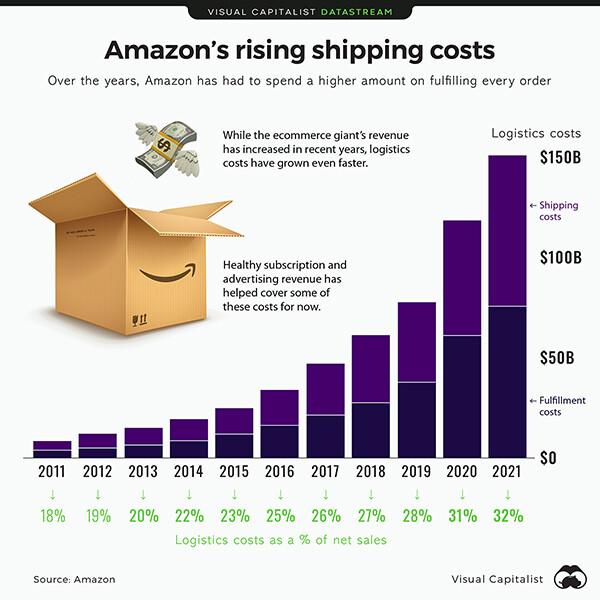
Adjusting Your Pricing Strategy Based on Shipping Costs
When it comes to running an online store, your pricing strategy should be as dynamic as the market itself. Adjusting your pricing based on shipping costs is crucial for maintaining your profit margins and staying competitive. Here are some key aspects to consider:
- Understand Shipping Costs: Shipping costs can vary significantly based on the carrier, distance, package weight, and dimensions. Keep track of these costs and integrate them into your pricing model.
- Factor in Handling Fees: Don’t forget to consider handling fees that may come from packaging materials or labor. This can influence your overall expenses and should be reflected in your product prices.
- Adjust for Location: If you sell to a wide range of locations, consider implementing a tiered pricing strategy based on geographic areas. Customers in remote areas may face higher shipping costs, which can be mitigated by adjusting their prices accordingly.
- Incorporate Real-Time Shipping Rates: Utilize plugins or tools that provide real-time shipping rates at checkout. This transparency can enhance customer trust and reduce cart abandonment.
- Analyze Competitor Pricing: Keep an eye on your competitors. If they offer free shipping or lower rates, you might need to reconsider your pricing strategy to remain attractive to potential buyers.
Here’s a simple table to help you visualize how shipping costs can impact your pricing adjustments:
| Shipping Cost Range | Suggested Price Adjustment |
|---|---|
| Under $5 | Minimal adjustment (keep prices competitive) |
| $5 – $15 | Consider a small price increase (1-3%) |
| $15 – $25 | Adjust prices by 5-10% for profitability |
| Over $25 | Reevaluate product pricing strategy or offer bundled shipping |
It’s also essential to communicate any adjustments clearly with your customers. They appreciate transparency about shipping-related costs, especially if you offer incentives like free shipping over a certain order amount. This not only encourages larger purchases but also helps balance out increased shipping costs.
Lastly, remember that pricing adjustments aren’t permanent. Monitor customer response and sales trends regularly. If you notice a drop in sales, don’t hesitate to reevaluate your strategy and make necessary tweaks. Adapting your approach in real-time will keep your online store thriving in a competitive landscape.
Frequently Asked Questions (FAQ)
Q&A: How to Calculate Shipping Costs for Your Online Store – Full Guide
Q1: Why is it important to calculate shipping costs accurately for my online store?
A: Great question! Accurate shipping cost calculations are crucial because they directly impact your pricing strategy, customer satisfaction, and overall profitability. If your shipping costs are too high, you risk losing sales, but if they’re too low, you might eat into your profits. Understanding how to calculate and communicate these costs can build trust with your customers and keep your business thriving!
Q2: What factors should I consider when calculating shipping costs?
A: Several factors come into play! First, consider the weight and dimensions of your products, as carriers charge based on these metrics. Then, think about the shipping distance and the destination—local versus international shipping can vary widely in cost. Don’t forget to factor in packaging materials and whether you’re offering free shipping or flat-rate options, as these can affect your bottom line.
Q3: Are there different shipping methods to consider?
A: Absolutely! You can choose from various shipping methods like standard, expedited, or overnight shipping, each with its own cost structure. Additionally, partnering with multiple carriers can give you the flexibility to pick the best rates based on your specific needs. Offering a mix can also cater to different customer preferences—some might be willing to pay more for faster delivery!
Q4: How can I incorporate shipping costs into my pricing strategy?
A: There are a few effective strategies here! You could offer free shipping by incorporating the cost into your product prices, which often attracts more customers. Alternatively, flat-rate shipping can simplify things for both you and your customers. Whatever approach you choose, be sure to communicate clearly about shipping costs during the checkout process to avoid cart abandonment.
Q5: What tools can help me calculate shipping costs more effectively?
A: Many online platforms and e-commerce solutions offer built-in shipping calculators that can streamline the process. You can also consider using third-party apps that integrate with your store, allowing real-time shipping rates from various carriers. These tools can save you time and ensure that your calculations are as accurate as possible.
Q6: How do I communicate shipping costs to my customers?
A: Transparency is key! Clearly display shipping costs on your website, especially during the checkout process. You might also want to provide shipping information on product pages, so customers know what to expect upfront. Consider using a shipping policy page to detail your options, costs, and delivery times—this builds trust and can enhance the shopping experience!
Q7: What if my shipping costs are higher than my competitors’?
A: If your shipping costs are higher, focus on the value you provide! Highlight the benefits of your products, exceptional customer service, or other perks like faster processing times. You could also offer limited-time promotions or incentives like free shipping thresholds to encourage larger purchases. Find ways to differentiate your brand beyond just price!
Q8: What’s the most important takeaway from this guide?
A: The bottom line is that calculating shipping costs is a balancing act. Take the time to analyze your options, understand your costs, and keep your customers informed. By doing this, you not only enhance the shopping experience but also position your store for success in the competitive online marketplace. Happy shipping!
Feel free to dive deeper into any specific area or ask additional questions as you navigate this essential aspect of your online business!
The Way Forward
And there you have it! Understanding how to calculate shipping costs for your online store doesn’t have to be a daunting task. By following the steps we’ve outlined, you can take control of your shipping strategy and ensure that it aligns with your business goals while keeping your customers happy.
Remember, transparent and accurate shipping costs can significantly enhance the overall shopping experience, leading to increased customer satisfaction and repeat business. So take a moment to review your current shipping methods and pricing. Are they working for you? If not, it’s time to make some adjustments!
As you implement these tips, keep in mind that the world of e-commerce is always evolving. Stay informed, be flexible, and don’t hesitate to experiment with different strategies to find what works best for you and your customers.
Thanks for joining us on this shipping journey! If you found this guide helpful, feel free to share it with fellow entrepreneurs or leave a comment with your own experiences and tips. Happy shipping, and here’s to your online store’s success!






